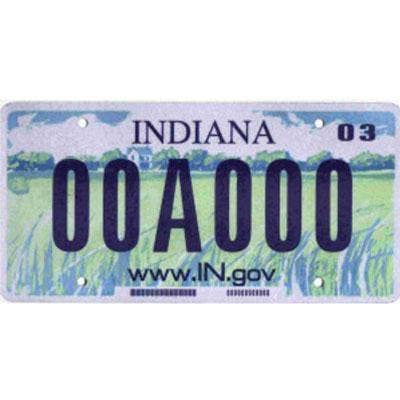10 States Breaking Down Broadband Barriers

Bullish On Bandwidth
As solution providers sometimes struggle with bandwidth constraints, state governments are stepping up to the plate to help expand connectivity for their residents and businesses. The driving force behind this push, many states said, is that it will help boost business and the economy. Take a look at 10 states reaching out to get their residents connected.

North Dakota
With a goal of extending broadband Internet access to 100 percent of North Dakota's nearly 700,000 residents, the state's StageNet initiative will help deploy and maintain a statewide network. The program has four main objectives: to develop a statewide network, increase bandwidth, expand network connectivity and improve mobile communications. The goal of the program is to help improve public safety broadband access, give all residents access to broadband and provide more telecommunications jobs.
A year ago, a grassroots movement called Dakota Fiber also launched in the state, inspired by Google Fiber's broadband initiatives. The group hopes to promote low-cost, fiber-optic connectivity across the state, and called for North Dakota to put some of its budget surplus toward the initiative.

Nevada
Started by an executive order in 2009, the Nevada Broadband Task Force has been working to break down barriers to broadband across the state, applying federal dollars, mapping and grants to the effort. Connect Nevada, a nonprofit that works in collaboration with the Nevada Broadband Task Force, helps communities apply that broadband access for technology expansion as well as helping with the mapping efforts. In 2013, the group found that 81 percent of residents in the state had broadband at home, up from 78 percent in 2010. On the business side, the group found in 2011 that 14,000 businesses still did not have broadband access.

Maryland
Working through the nonprofit group Maryland Broadband Cooperative, the state of Maryland is working to expand the "last mile" of broadband to state residents. The state is focusing on rural areas of the state; the group is helping build, manage and operate the network. The state also offers networkMaryland, a statewide network for public sector use, and the Inter-County Broadband Network to band together central county efforts. The separate initiatives are joined under the One Maryland Broadband Network.

Oklahoma
The Oklahoma Broadband Initiative is an effort by both education and government leaders in Oklahoma to extend broadband access to citizens and business throughout the state. The state's first step was to start mapping the bandwidth available across the state. Once it is mapped, the state will use grants to build the Oklahoma Community Anchor Network to expand network access for schools, businesses and communities. The state says that it sees the bandwidth expansion as a way to better engage with the global market.

Arkansas
In 2012, Arkansas found that it was at or near the bottom of the heap of states in regard to bandwidth and digital learning, according to a state report at the time. Particularly for schools, the state found that only 12 percent of schools had the recommended bandwidth capacity for 2014-15. In 2013, Gov. Mike Beebe launched a task force to evaluate the problem, which would likely prevent state education from complying with Common Core standards for technology, starting with the bandwidth capacity available in the state.

Michigan
While Michigan is among the most populous states in the country, it still had to work to get its bandwidth up to speed. With a struggling economy around the recession, the state was looking to boost innovation to drive more jobs and business in the state, an AT&T case study outlined. The initiative, driven by Gov. Rick Snyder, worked to boost network connectivity in both central and rural offices in the state to better support citizens and businesses. The state started with a fiber-based AT&T Switched Ethernet service, and said it plans to continue expanding the solution throughout the state.

Iowa
In September of last year, Iowa Governor Terry Branstad launched the Connect Every Iowan initiative to get the state legislature moving on broadband measures. The group would write a strategic plan and provide recommendations to the legislature on how best to boost broadband in the state. The initiative came in the wake of a TechNet State Broadband Index that ranked Iowa second to last in connectivity in the Midwest.

Illinois
The Partnership for Connected Illinois (PCI) has started piloting programs across the state to bring broadband availability and framework to more areas of Illinois. The eTeams, as PCI calls them, are made up of telecom professionals, community leaders, trainers and more. Chicago also is putting its own initiatives in place on top of statewide initiatives. For its efforts, Illinois was awarded a total of $6.5 million by the State Broadband Data and Development Program.

Wyoming
In November of last year, Gov. Matt Mead said he was committing $16 million for state broadband expansion. Mead said at the time that he thought it was the way for rural Wyoming to connect better with the rest of the country and the world. The state started with an upgrade to the network and invested in equipment to boost speeds in schools, and then building a decentralized network for state agencies and schools. The ultimate goal of the project, he said at the time, is to boost economic development in the state, including technology startups, health care, higher education and other businesses.

Indiana
Starting with an effort to map broadband connectivity in the state, Indiana is working on what it says is a multiyear and multiagency project to discover areas of the state covered by ISPs. The idea is that the map can then be turned into deployment of broadband services to weaker areas of the state. The Indiana Office of Technology has been designated as a fit for a federal grant for broadband, and is using the mapping to figure out how to best distribute those funds.